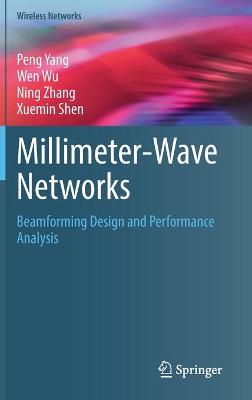Wireless Networks
2 total works
Vehicular Networking for Road Safety
by Feng Lyu, Minglu Li, and Xuemin Shen
Published 7 August 2020
The topics addressed in this book are crucial for both the academic community and industry, since the vehicular network has become an essential building block for intelligent transportation systems. The systematic principle of this book provides valuable guidance on the deployment and implementation of V2X-enabled road-safety applications. In addition, this book carries out structured technologies from the MAC layer to the link and network layer, which can provide a general introduction for interested readers with a comprehensive understanding of applying vehicular networks in enhancing road safety, and offers a systematized view for researchers and practitioners in the field of vehicular networks to help them optimize and improve the desired vehicular communication systems.
Road safety has always been the first priority for daily commuters on the road. Vehicular networks can be an effective solution to enhance road safety, via which vehicles can exchange cooperative awareness messages rapidly, contributing to better situation awareness and maneuvering cooperation. However, with the fast-changing network topology, intermittent wireless link, and dynamic traffic density, it is challenging to achieve satisfying network performance.
This book introduces the background of vehicular networks, provides a comprehensive overview of networking techniques in supporting road-safety applications, states the technical motivations per the MAC, link, and network layer, and proposes/designs vehicular networking technologies at the corresponding layer respectively to guarantee low-latency and reliable V2X communications for road-safety applications. By extending the proposed networking technologies to support all types of vehicular services, this book also outlines open issues and research directions in future 5G and beyond vehicular networks.
Road safety has always been the first priority for daily commuters on the road. Vehicular networks can be an effective solution to enhance road safety, via which vehicles can exchange cooperative awareness messages rapidly, contributing to better situation awareness and maneuvering cooperation. However, with the fast-changing network topology, intermittent wireless link, and dynamic traffic density, it is challenging to achieve satisfying network performance.
This book introduces the background of vehicular networks, provides a comprehensive overview of networking techniques in supporting road-safety applications, states the technical motivations per the MAC, link, and network layer, and proposes/designs vehicular networking technologies at the corresponding layer respectively to guarantee low-latency and reliable V2X communications for road-safety applications. By extending the proposed networking technologies to support all types of vehicular services, this book also outlines open issues and research directions in future 5G and beyond vehicular networks.
Millimeter-Wave Networks
by Peng Yang, Wen Wu, Ning Zhang, and Xuemin Shen
Published 28 October 2021
This book provides a comprehensive review and in-depth study on efficient beamforming design and rigorous performance analysis in mmWave networks, covering beam alignment, beamforming training and beamforming-aided caching. Due to significant beam alignment latency between the transmitter and the receiver in existing mmWave systems, this book proposes a machine learning based beam alignment algorithm for mmWave networks to determine the optimal beam pair with a low latency. Then, to analyze and enhance the performance of beamforming training (BFT) protocol in 802.11ad mmWave networks, an analytical model is presented to evaluate the performance of BFT protocol and an enhancement scheme is proposed to improve its performance in high user density scenarios. Furthermore, it investigates the beamforming-aided caching problem in mmWave networks, and proposes a device-to-device assisted cooperative edge caching to alleviate backhaul congestion and reduce content retrieval delay.
This book concludes with future research directions in the related fields of study. The presented beamforming designs and the corresponding research results covered in this book, provides valuable insights for practical mmWave network deployment and motivate new ideas for future mmWave networking.
This book targets researchers working in the fields of mmWave networks, beamforming design, and resource management as well as graduate students studying the areas of electrical engineering, computing engineering and computer science. Professionals in industry who work in this field will find this book useful as a reference.
This book concludes with future research directions in the related fields of study. The presented beamforming designs and the corresponding research results covered in this book, provides valuable insights for practical mmWave network deployment and motivate new ideas for future mmWave networking.
This book targets researchers working in the fields of mmWave networks, beamforming design, and resource management as well as graduate students studying the areas of electrical engineering, computing engineering and computer science. Professionals in industry who work in this field will find this book useful as a reference.

